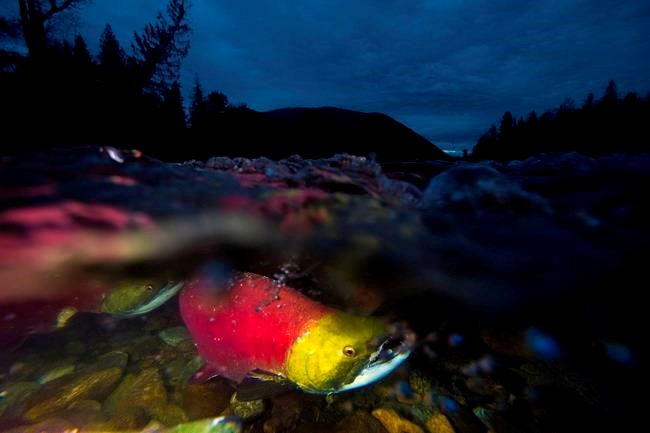Do you rely on labels such as the blue checkmark of the Marine Stewardship Council or other certification stamps to guide your purchase of sustainable salmon? Most people do, but few consumers know that when it comes to salmon, these certifiers generally fail to consider ecosystem science.
Even Marine Stewardship Council permits industrial-model fisheries with open-ocean, mixed-stock salmon harvests that are a major cause of both the coast-wide loss of wild salmon populations and the failure of many populations to rebuild or recover over time.
Researchers from Wild Fish Conservancy, Raincoast Conservation Foundation and the University of Montana are proposing an alternative framework for certifying commercially caught wild salmon. The alternative is explained in a paper recently published in the science journal FACETS titled: “Criteria for a good catch: A conceptual framework to guide sourcing of sustainable salmon fisheries.”
The new framework, which Patagonia Provisions is using to guide its purchase of premium wild salmon, is grounded in the “place-based” concept of salmon management. This place-based foundation recognizes the ecological connection between wild salmon and the watersheds in which they spawn and rear and to which they are locally adapted.
According to Nick Gayeski, the study’s lead author and scientist with the Wild Fish Conservancy: “Salmon management needs to become place-based; this means fish are harvested near their rivers of origin, the fishery has high confidence in the number of salmon that can be safely harvested, and the diversity of wild salmon is maintained over multiple generations, especially in the face of rapid climate change.”
Place-based fisheries must also demonstrate low or negligible by-catch of non-target salmon, and release any non-target salmon caught, unharmed. Many industrial fisheries will release non-target salmon, but how many survive to spawn after they land on the deck of a fish boat?
The framework for sustainable harvest suggests that individual retailers develop or adopt criteria that complies with this place-based foundation. Patagonia Provisions, for example, is one retailer requesting this high standard of certification because its customers want higher standards than are currently available. Reef-net fisheries, such as Lummi Island Wild, and terminal beach seine or pound nets are examples of smaller, selective fisheries that occur closer to spawning grounds and provide high quality salmon.
“The uniqueness of each river, and the salmon runs that return to them, drive this criteria,” states Misty MacDuffee, a co-author and biologist from the Raincoast Conservation Foundation.
“Conventional fisheries have failed to manage salmon sustainably, place-based management addresses this; less salmon would be caught, their value would be higher, more salmon would reach spawning grounds, and fishery impacts on non-target salmon would be reduced. It also lets the consumer know how, and where (specifically), each salmon was caught. Consumers want this level of sustainability and accountability.”
The authors argue that sourcing sustainable salmon products using the proposed criteria would provide more transparent and trustworthy salmon products to retailers and consumers than existing large-scale certification programs such as Marine Stewardship Council and Seafood Watch, while also shifting salmon management to more local and sustainable place-based harvest.
The proposal put forward by Raincoast and Wild Fish Conservancy would give fishermen a higher dollar per pound, often with less operating costs to them, but a lower catch overall, which in turn would give our coastal ecosystems more salmon. Consumers would be able to buy with far more confidence that the salmon they are selecting at the local grocery store did not come at an inordinate cost to coastal ecosystems and other wild salmon populations.
Patagonia Provisions says that their customers are demanding to know how and where the wild salmon is caught for the smoked salmon products the company offers.
Ultimately, the pathway laid out in the FACETS paper is a way toward more sustainable fishing of wild salmon throughout the Pacific coast on both sides of the border. In British Columbia, Raincoast is urging B.C. fishermen to buy into this transition in order to achieve an adequate level of sustainability. To accomplish this, the industry needs to move out of ocean-interception fisheries to more terminal (i.e. river-based) fisheries.
Such sourcing criteria for food retailers can be simpler, more rigorous and less ambiguous than large-scale certification processes. As the FACETS paper concludes, adoption of this criteria would help companies such as Patagonia Provisions ensure their products are derived from sustainable wild-salmon fisheries.
Chris Genovali is executive director of Raincoast Conservation Foundation.



